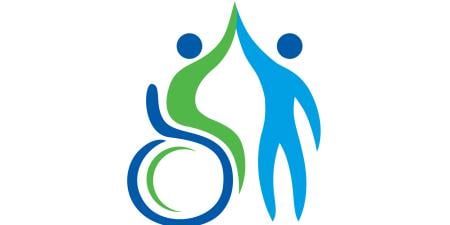Case
Dr. Smith, a family medicine physician, is preparing for a full day of patient appointments. She is looking over the chart of Stephanie, a new patient, who is here for an annual physical. Stephanie is 30 years old and has autism. Dr. Smith notices that Stephanie has had regular uneventful periods but has never had a pap smear. Dr. Smith knows that pap smears are recommended for all women starting at the age of 21, so she makes a mental note to ask specifically about any previous pap smears and enters the room to meet Stephanie, who is sitting quietly in the corner, looking intently at one of the pictures hanging on the wall. Dr. Smith first introduces herself by saying, “Hi Stephanie, my name is Dr. Smith, but you can call me Julie. Nice to meet you.” Stephanie looks up and nods but does not say anything. Dr. Smith introduces herself to Stephanie’s caseworker, Hannah, then turns back to Stephanie and asks, “Tell me how you have been doing over the past year, Stephanie.”
Stephanie waves her hand, expressing “so-so,” and Hannah explains, “She’s nonverbal, but you can ask me any questions you need to know. I have her whole file and know her well.” As the conversation progresses, Dr. Smith learns that Stephanie has lived in a group home for about 15 years. She struggles with some behavioral problems at the home and has difficulty communicating her needs to the staff.
Dr. Smith remarks, “I notice that Stephanie has never had a pap smear before, at least according to our records. I wanted to check and make sure that information is accurate, since we would typically recommend this important screening for a patient of her age.”
Hannah responds, “Yes, that is correct. It has been discussed in the past, but we have always been concerned that a pap smear would be too distressing for her. Stephanie is very sensitive to sensory stimuli, especially anything painful. She’s required to get a flu shot every year to live in the group home, and it’s always so awful for her. I am not sure that a pap would be worth her distress, especially because she is not sexually active.”
Dr. Smith wonders if this is true. She asks, “Have there ever been any concerns about sexual abuse with Stephanie?”
Hannah answers, “Certainly not since she has been in the group home. She is very well supervised, and we have never had any problems with abuse among our staff. But we have very little information about her life prior to coming to the group home. She does not have any family involved in her care at this time.”
Dr. Smith replies, “Screening recommendations are indeed recommendations and not requirements, so I am open to discussion about the pap smear for Stephanie. However, given her unclear history I am inclined to err on the side of doing one. There is a high rate of sexual abuse in patients with intellectual disabilities. Since we do not know much about her previous history, I would rather be safe than sorry.”
Hannah sighs and says, “Well, Stephanie has dental work done under sedation every year, so perhaps she could just have her pap smear done at the same time. She wouldn’t even have to know it was done. We have done it before with some of the other residents, and it was a great solution.”
Dr. Smith considers Hannah’s suggestion, but she feels uncomfortable performing such an invasive procedure if it can only be done by deceiving the patient and by using a sedative as a chemical restraint. Dr. Smith feels that doing a vaginal exam and cervical test without Stephanie’s knowledge or consent to be more ethically problematic than doing a routine dental exam. She worries that performing the pap without permission of a sedated patient borders morally on rape. Even though Hannah is Stephanie’s official decision maker, Dr. Smith wonders whether it is ethical to leave Stephanie out of the decision entirely.
Commentary 2
At the end of the case scenario, Dr. Smith “worries that performing the pap without permission of a sedated patient borders morally on rape.” Some might find this attitude perplexing, but this commentary will show this is a valid concern. While it might be legal to perform a pelvic exam and pap test action with proxy consent, we can still ask whether and when it is ethical. Chemical constraint—sedation, in this case—can count as a form of coercion. If chemical restraint is required to subdue a patient or quell her verbal or nonverbal expressions of resistance or opposition to a pelvic exam, then it does begin to look a lot like rape. According to the Department of Justice, the definition of rape is this: “The penetration, no matter how slight, of the vagina or anus with any body part or object, or oral penetration by a sex organ of another person, without the consent of the victim” (emphasis added) [1]. As we can see, consent is the crucial element in determining whether and when penetration is defined as rape. Thus, the main issues in this case are information disclosure and the patient’s capacity to respond to that information. I will argue that Dr. Smith and Hannah owe Stephanie a developmentally appropriate conversation at her level of health literacy about their concerns and suggested course of treatment. If possible, they should obtain Stephanie’s assent to continue. To illustrate why this is ethically required, I consider two relevant practices: nondisclosed pelvic exams in teaching hospitals and assent for children unable to legally consent to treatment.
Controversy Regarding Nondisclosed Pelvic Exams: The Example of Teaching Hospitals
To begin, let us consider the similar issue of nondisclosure of pelvic exams on sedated women at teaching hospitals. If a woman has routine gynecological surgery at a teaching hospital, she (like everyone else) will likely sign a consent form that includes a blanket consent to allow students to examine and do procedures on her. Historically, teaching hospitals have used this as an opportunity for medical students to practice vaginal exams and have not required any explicit consent for them [2]. After some controversy in 2003, many hospitals revised their practices to require explicit consent for pelvic exams [2, 3] and some states instituted legal requirements [4]. However, blanket consent is still perfectly legal in most places, and some hospitals continue to perform pelvic exams on unconscious women without explicit consent [5]. Those who argue against the practice claim that women would be “upset” [3] and some anecdotal evidence suggests that many women would feel “violated” [6] to find out that this could be happening without their explicit consent.
I believe the uneasiness that many medical students and women feel about this practice is because of the parallels to rape [7]—especially since research shows that many women are willing to give consent for a pelvic exam in a teaching context when they are explicitly asked [2]. When fully autonomous women—despite having voluntarily signed blanket consent forms—are being penetrated (sometimes by multiple people) without their knowledge or explicit consent [5, 6] and are not comforted by the legality of blanket consent [4], it suggests that consent for a particular examination at a particular point in time for a particular purpose (presumably, a clinical or teaching purpose) is important.
Since ethical questions have been raised about vaginal exams on unconscious women who are (presumably) fully competent [2, 4, 5], it is certainly worth taking a closer look at the ethics of a pelvic exam for Stephanie in this case, particularly if her unconsciousness is required to carry it through. Given patients’ alarm at penetration without specific disclosure, I argue that, if any physician plans to perform an invasive procedure or examination on an unconscious woman, he or she is ethically required to disclose this information to the patient—in a way appropriate to that patient’s health literacy level.
Disclosure to Patients Not Legally Able to Give Consent: The Example of Children
Next we more fully consider health literacy and the role of the patient’s decision-making capacity—specifically at what level she is able to participate in this decision. In Stephanie’s case, some readers may feel that disclosure of an intended pelvic exam might be irrelevant or counterproductive because they assume that Stephanie will not understand it. I argue that it is health professionals’ responsibility to disclose in a way the patient can understand.
When it comes to informed consent, autism creates a special challenge. While some individuals on the autism spectrum are highly intelligent and have a good understanding of what people are saying to them, some may have problems with expressive communication. For this reason it seems impractical to make a general response to the question of whether proxy consent is appropriate for all patients with autism or other kinds of intellectual disabilities—even those with court-appointed guardians. I will, therefore, consider this question only for Stephanie as an individual in this particular case. We are told Stephanie is nonverbal, lives in a group home, and has a legal guardian [8]. However, it is also clear from her brief exchange with Dr. Smith that she has some ability to communicate; Stephanie appears to understand Dr. Smith’s general question and to appropriately respond. With this in mind, would it be possible for her to participate in some kind of patient education or consent process? We have a clear example of such processes in pediatric ethics.
Most children are not legally allowed to give consent for health care treatment. Yet, the Committee on Bioethics for the American Academy of Pediatrics (AAP) strongly encourages developmentally appropriate disclosure and an attempt to obtain assent [9]. So, there seems to be a relevant consensus in the pediatric community that
Patients should participate in decision-making commensurate with their development; they should provide assent to care whenever reasonable. Parents and physicians should not exclude children and adolescents from decision-making without persuasive reasons [10].
Let me clarify that, in referring to the AAP statement, I am not trying to infantilize those with disabilities. Rather, I am using this statement to establish precedent for involving patients in the decision-making process even when they are not legally able to give informed consent. Children have legally recognized proxy decision makers—their parents—but the AAP recognizes the inadequacy of proxy consent (especially as children get older) and promotes a policy of transparency and empowerment [9]. To better assess our current case, it is worth reviewing this summary of specific AAP recommendations for obtaining assent, which should include at least the following elements:
- Helping the patient achieve a developmentally appropriate awareness of the nature of his or her condition.
- Telling the patient what he or she can expect with tests and treatment(s).
- Making a clinical assessment of the patient’s understanding of the situation and the factors influencing how he or she is responding (including whether there is inappropriate pressure to accept testing or therapy).
- Soliciting an expression of the patient’s willingness to accept the proposed care. Regarding this final point, we note that no one should solicit a patient’s views without intending to weigh them seriously. In situations in which the patient will have to receive medical care despite his or her objection, the patient should be told that fact and should not be deceived [11] (emphasis added).
If children (even young children) deserve this level of disclosure and consideration, it is very difficult to argue that Stephanie does not.
Recommendation
Dr. Smith and Hannah should explain their concerns and what they plan to do in a way that meets Stephanie’s level of understanding. Explaining that they would like to sedate her so that she can avoid the unpleasant sensory experiences that cause her distress can and should be part of this discussion. Stephanie clearly knows that she is sensitive to stimuli and might welcome the sedation. Indeed, sedation as a chemical constraint is not coercive or an unjustifiable use of force if one has consent or assentfrom the patient.
Furthermore, as we see from the AAP recommendations, even if Stephanie does not assent and Dr. Smith and Hannah decide there are good reasons to proceed with this procedure anyway, they still have an ethical responsibility to disclose as fully as possible to Stephanie what they are planning to do. To sedate her and penetrate her without disclosure does indeed put their (technically legal) actions dangerously close to the definition of rape.
Finally, we must consider that current practices set precedents for future practices—which makes disclosure and assent even more necessary for establishing an ethical track record of patient care over time. So, what might this mean for Stephanie? If the pap is performed and there are precancerous or cancerous cells, what then? Presumably, Stephanie would need a series of medical procedures in order to determine the severity of her health issue and to treat it. Would this mean that Dr. Smith is now faced with the need to repeatedly sedate Stephanie and perform invasive treatments? Even if no problems are found during the initial exam, it is likely Dr. Smith and Hannah would consider other preventative exams in the future. Therefore, how Dr. Smith approaches this exam will set a precedent for his future treatment of Stephanie and with other patients.
In sum, I argue that disclosure and assent are crucial in this case. Controversy noted above over practicing pelvic exams on unconscious women without their explicit knowledge and consent suggests that legal consent does not always coincide with ethical practice. Fortunately, the AAP guidelines for obtaining assent from pediatric patients provide an example of how we might meet ethical standards in our current case. Even though Stephanie has a legal guardian, it is clear that she also has some ability to understand and communicate. For this reason, Dr. Smith and Hannah owe Stephanie an explicit discussion about their proposed plan of treatment.
References
-
Attorney General Eric Holder announces revisions to the Uniform Crime Report’s definition of rape [news release]. Washington, DC: US Department of Justice Office of Public Affairs; January 6, 2012. http://www.justice.gov/opa/pr/attorney-general-eric-holder-announces-revisions-uniform-crime-report-s-definition-rape. Accessed February 29, 2016.
- Wolfberg AJ. The patient as ally--learning the pelvic examination. N Engl J Med. 2007;356(9):889-890.
-
Caruso DB. Many med schools halt no-consent pelvic exams. Seattle Times. March 12, 2003. http://community.seattletimes.nwsource.com/archive/?date=20030312&slug=pelvic12. Accessed February 29, 2016.
-
Walden R. Conversations we shouldn’t still be having: pelvic exams under anesthesia. Our Bodies, Our Blog. September 26, 2012. http://www.ourbodiesourselves.org/2012/09/conversations-we-shouldnt-still-be-having-pelvic-exams-under-anesthesia/. Accessed February 29, 2016.
-
Barnes SS. Practicing pelvic examinations by medical students on women under anesthesia: why not ask first? Obstet Gynecol. 2012;120(4):941-943.
-
Ubel P. The ethics of conducting a pelvic exam on an anesthetized woman. KevinMD. September 12, 2012. http://www.kevinmd.com/blog/2012/09/ethics-conducting-pelvic-exam-anesthetized-woman.html. Accessed February 29, 2016.
-
Walden R. Pelvic exams and informed consent. Women’s Health News. March 3, 2007. https://womenshealthnews.wordpress.com/2007/03/03/pelvic-exams-and-informed-consent/. Accessed February 29, 2016.
-
The case states that Hannah is Stephanie’s “official decision maker,” so I am assuming that Hannah is Stephanie’s legal guardian or equivalent in relation to health care decisions.
-
Informed consent, parental permission, and assent in pediatric practice. Committee on Bioethics, American Academy of Pediatrics. Pediatrics. 1995;95(2):314-317.
-
Informed consent, 314.
-
Informed consent, 315-316.



